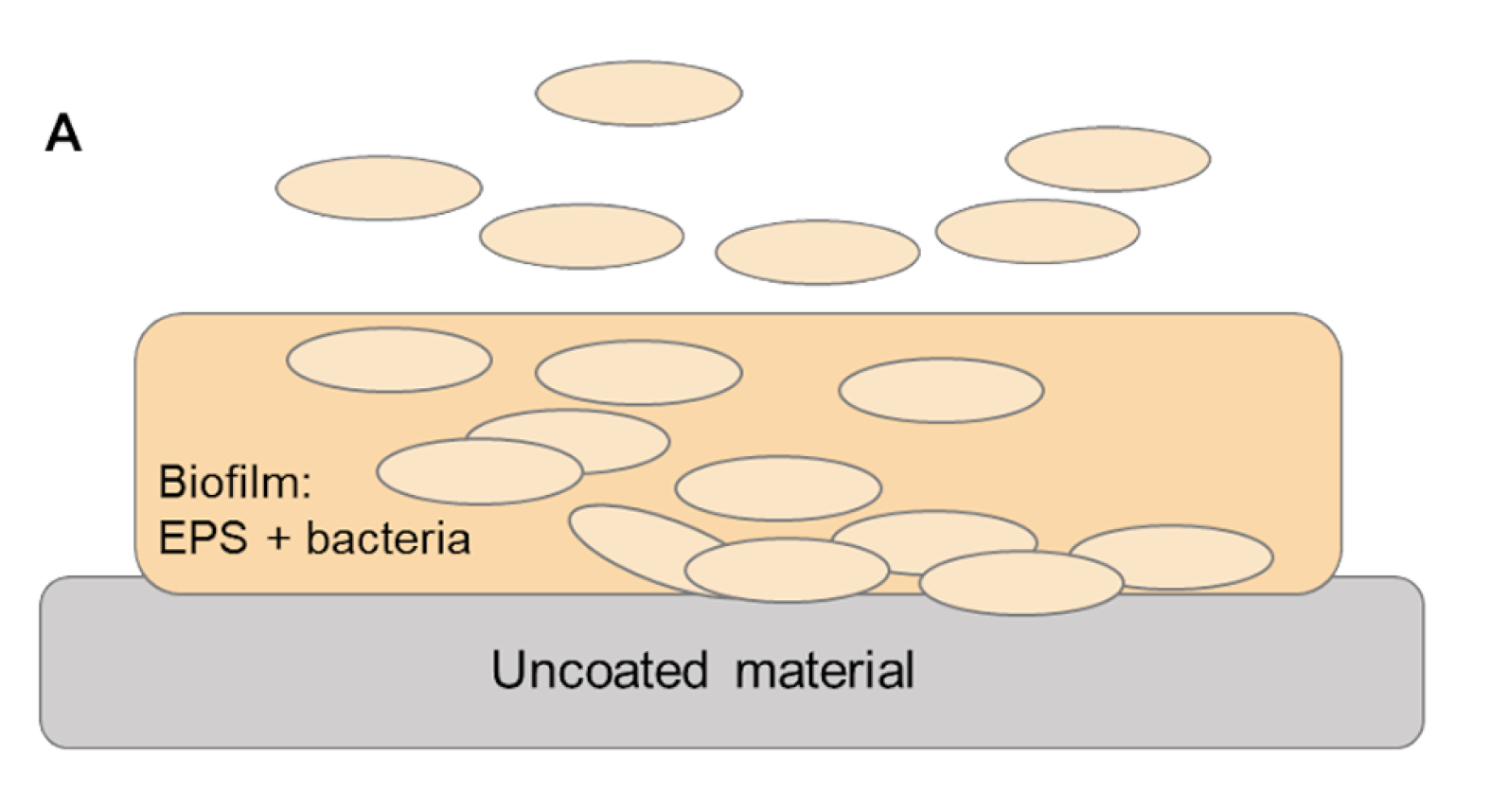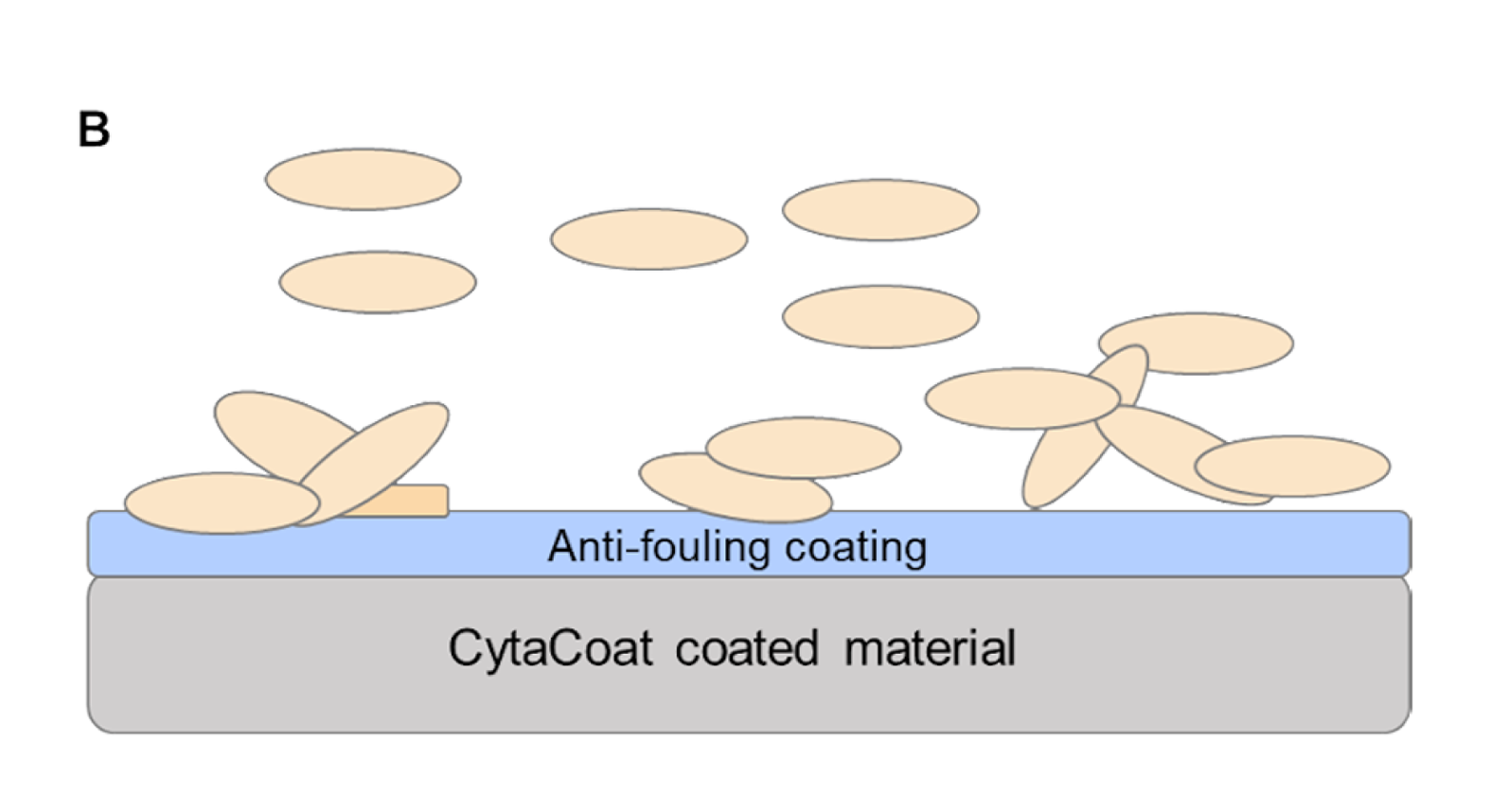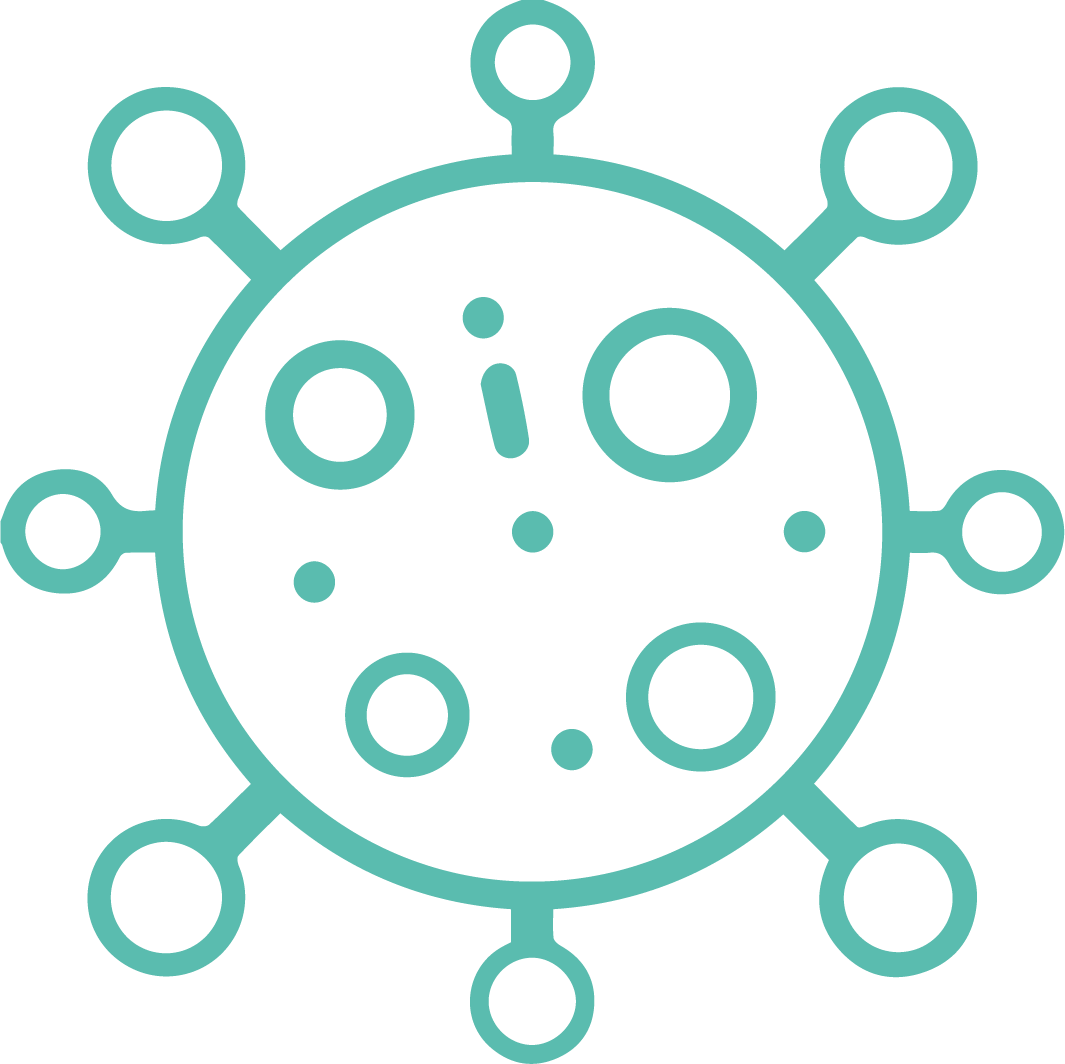Technology
CytaCoat anti-fouling coating
Prevents biofilm formation and offers long lasting low friction
The coating comprises a proprietary ligand bound to a unique hydrogel forming a surface layer that is covalently bound to the medical device.
It prevents biofilm formation for all tested bacteria (Gram-positive and Gram-negative) and fungi, providing a universal effect. It does so without killing bacteria and therefore does not disturb healthy microbial flora.
The coating has been shown to be biocompatible in multiple tests, i.e. direct and indirect cytotoxicity tests, skin irritation, and implantation tests. The coating comprises a proprietary ligand bound through a linker to a polyacrylic acid polymer backbone forming a surface layer that is covalently bound to the medical device. The coating is stable (long term) and has low friction, which facilitates insertion and removal of a device and provides enhanced comfort as it also works as a cushion towards sensitive tissues when a device is in place.
Optimised and customisable process for applying CytaCoat novel anti-biofilm coatings to medical devices
We have developed a novel process for coating medical device polymer materials with our proprietary anti-fouling and anti-biofilm surface coating.
The process includes a unique method for grafting of a polyacrylic acid polymer to a device surface before coupling of our proprietary ligand through dipping. This is a new coating protocol that is easy and cost-effective to scale up and uses readily available non-toxic chemicals.
At our facility in Stockholm, we have laboratory scale and Pilot Plant facilities and are able to conduct development and testing and produce finished, packed sterile product via our collaborations with key manufacturing supply chain partners.

A) On an uncoated material, EPS and colonisation of bacteria in a biofilm starts to build up within hours.

B) The coating creates an anti-fouling enviroment that prevents the bacteria forming biofilm/EPS.
CytaCoat competing solutions
The CytaCoat technology excels over competing solutions

Polymer materials
CytaCoat technology can be applied to all the most common polymer materials used in medical devices
Picture (TBD)
- Silicone
- Polyethylene
- Polypropylene
- Polyurethane
- PVC
- Polycaprolactone

CytaCoat AB, Maria Aspmans gata 44A, 171 64 Solna SWEDEN | E-mail info@cytacoat.se
Design LIVE Reklambyrå
